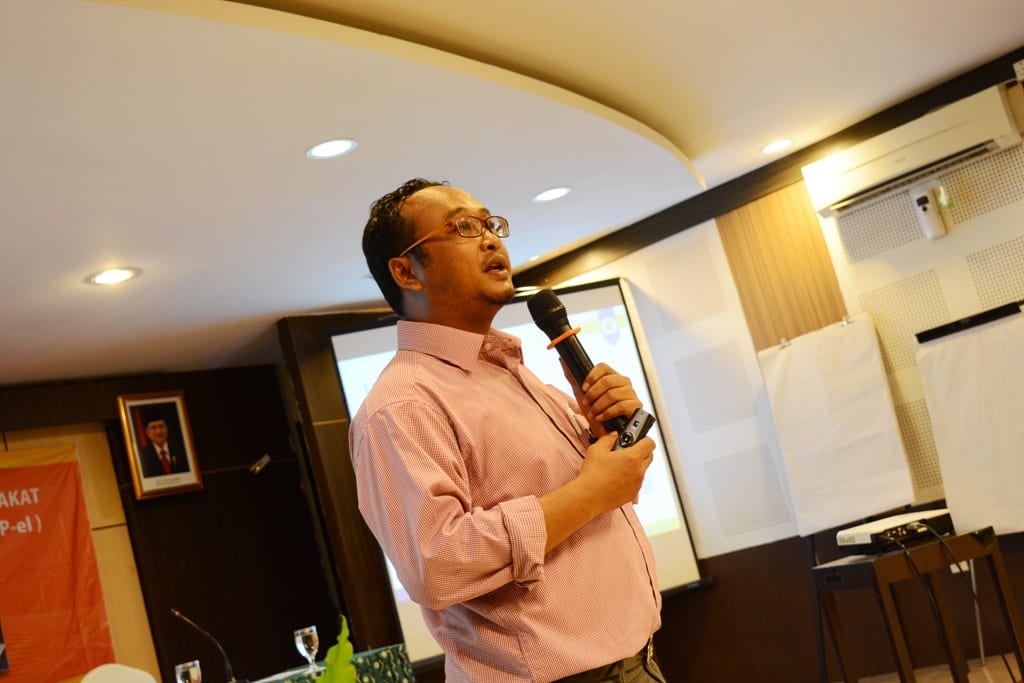Yogyakarta, PSKK UGM – Poverty is a very dynamic issue, depending on the challenges at the time. Each period of Indonesian government has its own focus and character in poverty alleviation efforts.
In the early independence, the government faced challenges of military aggression that the colonial nation intensified again so that the state political and security situation was not yet stable. During the period 1959-1965 (i.e. the President Soekarno era), a National Planner Council or called Dewan Perancang Nasional (Depernas) was formed, which in its course would establish the National Development of the Eight-Year National Planning or called Pembangunan Nasional Semesta Berencana Delapan Tahun (Penasbede) in 1961-1969. Poverty alleviation program is regarded as an effort to raise national pride, maintain independence, and strengthen national unity of a newly established nation.
It was different during the President Soeharto era. From the end of 1966 to the end of 1968, the government focused on stabilizing the economic and political situation by stabilizing prices of basic needs. Poverty alleviation program is included in Soeharto’s typical development plans, which we all know as REPELITA (Rencana Pembangunan Lima Tahun).
A researcher at CPPS UGM, who has an interest in poverty issues, Eddy Kiswanto, S.Sc., M.Sc. said that poverty alleviation in Pelita I-IV was carried out through sectoral and regional programs, while the strategy used in Pelita V-VI was to overcome the problem of socio-economic inequality. He added that there were three approaches in poverty alleviation policies in the President Soeharto era; basic needs fulfillment, community empowerment, and a rights-based approach.
The poverty alleviation was very significant at that time. From 1976 to 1996, the number of poor people decreased by 31.7 million or an average of 1.6 million per year. During these 20 years, the poverty rate in 1996 was at the lowest position; 11.7 percent or around 22.5 million poor people.
“But in 1997 and 1998, poverty rates rose significantly again. The Central Statistics Agency clarified that the increase in poverty was due to the changes in the method of calculating the number of poor people. According to Central Statistics Agency, the economic crisis did not necessarily increase the number of poor people,” Eddy said.
By early 2000s period, Law of the Republic of Indonesia Number 5 of 2000 concerning the National Development Program was issued. There are four poverty alleviation strategies proposed by creating opportunities, community empowerment by increasing access to economic and political resources, increasing capacity through education and housing, and social protection for those who suffer from physical disabilities, the poor, isolated families, retirement of employees, and victims of social conflict.
The focus is to continue the poverty alleviation program, and some related regulations were issued by the government, such as; 1) Presidential Decree Number 124 of 2001 junto Number 34 and Number 8 of 2002 as the legal basis for the establishment of the Poverty Alleviation Committee or called Komite Penanggulangan Kemiskinan (KPK), 2) Presidential Regulation Number 54 of 2005 concerning the Establishment of Poverty Alleviation Coordination Team or called Tim Koordinasi Penanggulangan Kemiskinan (TKPK) whose existence is expected to continue and strengthen the results achieved by the KPK, and 3) Presidential Regulation Number 15 of 2010 concerning Acceleration of Poverty Alleviation as a revision of Presidential Regulation Number 13 of 2009 concerning Coordination of Poverty Reduction.
The regulations mandate the establishment of National Acceleration of Poverty Alleviation Team or called Tim Nasional Percepatan Penanggulangan Kemiskinan (TNP2K) at the national level and Poverty Alleviation Coordinating Team or called Tim Koordinasi Penanggulangan Kemiskinan (TKPK) at the provincial level. Both are still actively carrying out poverty alleviation programs.
CPPS UGM, continued Eddy, as one of the study centers has always been actively involved in government poverty alleviation programs, particularly in monitoring and evaluation study. In 2005, CPPS UGM with Coordinating Ministry for People’s Welfare of the Republic of Indonesia conducted a monitoring and evaluation study on the Compensation and Reduction Subsidy Program. CPPS UGM then conducted a Conditional Cash Transfer (CCT) Survey which aimed to measure three things; 1) household access to health and education services, 2) availability and quality of health services and education, and 3) government efforts to improve health and education.
There were also studies on Monitoring Information System (MIS) of the PNPM-Generasi Sehat dan Cerdas (PNPM-GSC) in 2013 and 2014, Monitoring Bantuan Siswa Miskin (BSM) in 2013-2014, Pemutakhiran Basis Data Terpadu (PBDT) in 2015, Evaluasi Dampak Intervensi BCC (Behavior Change Communication) on the Changes in Recipient Mothers’ Behavior of PKH in 2016, and Monitoring dan Evaluasi Program Bantuan Pangan Non-Tunai (BPNT-2017). [] Media Center of CPPS UGM.

